When I took my first steps into the world of NFT I was surprised by the huge amount of work behind a successful community, so I decided to share what I’m learning along the way (more posts on specific topics will follow). Please reach out if there is anything inaccurate or if you are looking for something that has not been discussed here.
—
Running an NFT project is kind of like running a business. While it may sound like an easy task, there’s a lot of work involved. It doesn’t just come down to the artwork collection – you also need to focus on other key elements and factors, such as the marketing strategy, the community, the long-term vision, and so on.
That’s why today I’m not going to focus on the artsy side of NFTs. Instead, in this article, we’ll discuss a series of elements that are vital to growing a community and ensuring the success of your project. Here’s what we’ll cover:
Let’s go.
1. Project presentation
Yep, a website sounds prehistoric thing nowadays, but you simply can’t avoid it. It’s still marketing 101 and your NFT project is no exception to this rule.
As a tennis fan, the first project I invested in was The Ballman Project, and even though my passion for the sport has played a major role, this happened mainly becase the website for Stan Wawrinka’s NFT project caught my attention immediately. Agreed, also the BAYC website it’s simple and to-the-point, but my wallet wasn’t ready to mint an ape.
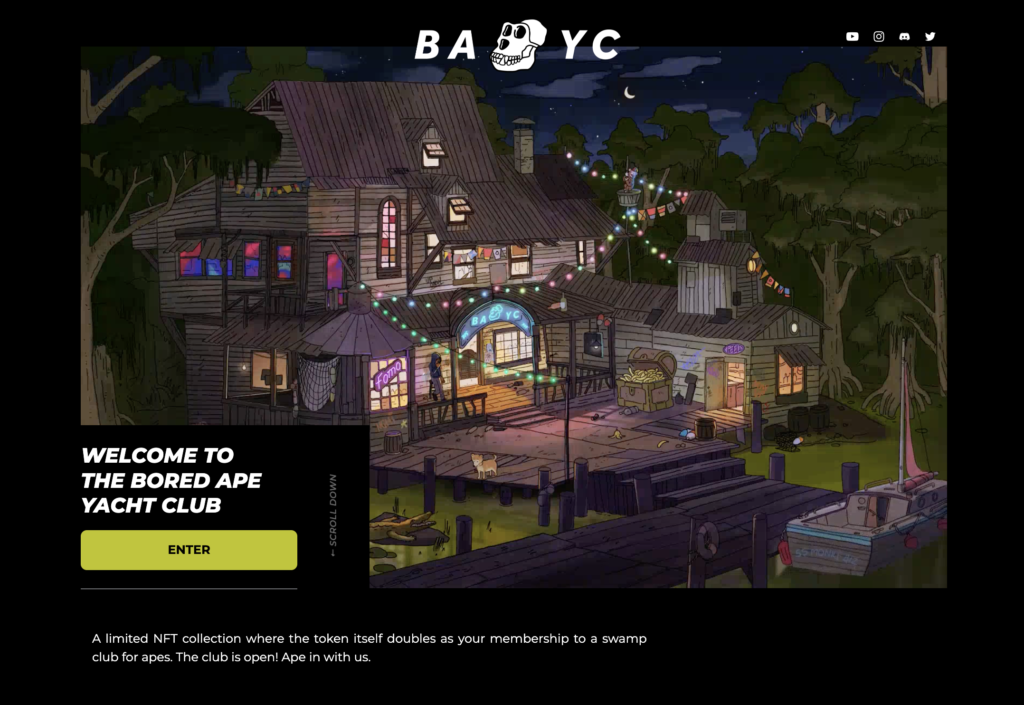
Let’s dig deeper into the essential components of a proper website for an NFT project.
1.1 Description of the project
The description should explain what your NFT project is all about and why it’s worth the money. It should reflect the heart and soul of your project and your vision in a concise and engaging way.
It’s no place to be generic or vague. You should clearly and briefly state all the relevant details —what the NFT is, how much it costs, and where people can buy it— while capturing your readers’ short attention span.
1.2 Roadmap
Just like any regular business, NFT projects should set out key milestones, short and long-term goals, and marketing strategies to support their vision and mission. All that information is mapped out on the a roadmap which should conveys the project’s long-term value.
While it’s important to draft an ambitious roadmap, you need to make sure your goals and strategies are doable – otherwise, you might end up losing credibility.
Let’s circle back to the Ballman project. Ever since I minted my first player over a month ago, I’ve been waiting for things to happen. The first airdrop was only partially accomplished, and the community is getting anxious.
Unkept promises and frustrated users are becoming a bit of a trend now (we’ll cover this issue in an upcoming post), so don’t go too over the top. Set milestones and goals that you can actually achieve and exceed expectations instead of falling short.
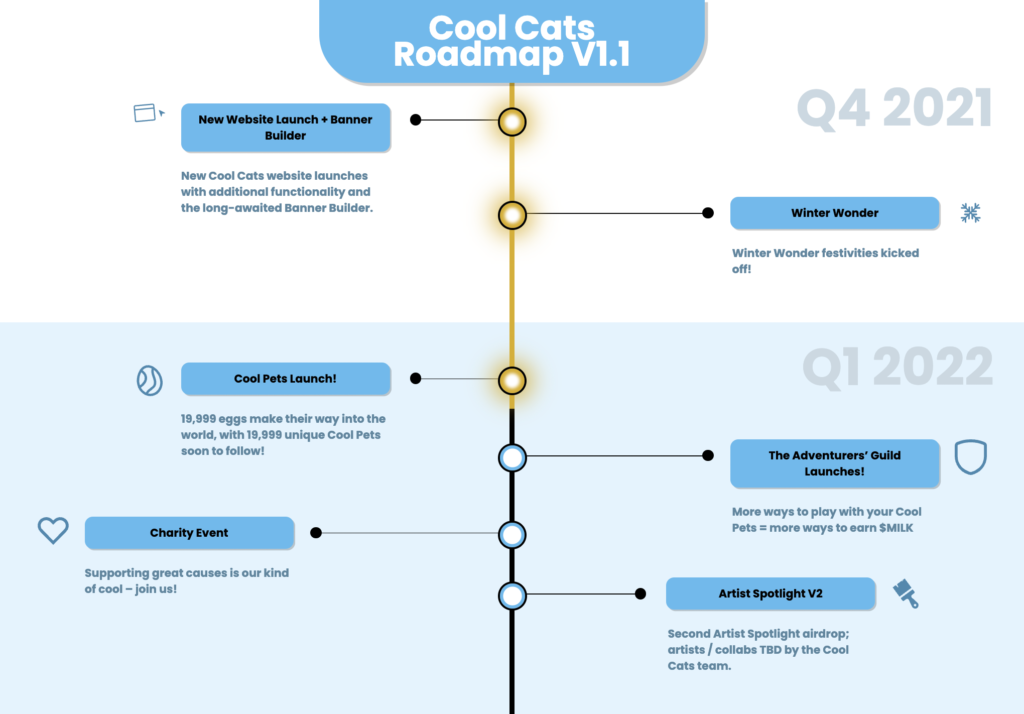
1.3 White paper
Some title this section Whitepaper, others find more creative ways (as the Cool Cats – Cool Hub), but regardless of the definition, for those project which are more than a short-term speculative collection, this is the cornerstone of your project’s presentation.
It tells people all they need to know about the project: its goal, its vision, an overview of the team, logics of gamification, information about drops, traits and rarities (more on this in a next post) and so on.
It is relevant for the credibility of your project, so it is not something you can take lightly.
In fact, the white paper for the Ballman project really managed to get me hyped. And that’s what you should aim for with yours. Your project’s white paper should catch people’s attention and spark their interest in becoming part of the adventure.
Have you read any cool white papers recently? Ping me, I’d love to take a look!
1.4 Team
The team behind an NFT project is a major factor when it comes to credibility and engagement. Some people even go as far as to say that when you’re investing in an NFT project, you’re actually investing in the humans behind it.
The thing is that if you want your project to succeed, you need to convey a certain level of transparency. People need to trust you. And in most cases, they will only trust you if you share your team members’ names and experience, as well as any other critical information you feel comfortable divulging.
While it’s true that many NFT teams remain anonymous, transparency can actually make or break a project. If your team and founders have a track record and relevant experience, your project will look a lot more inviting for people looking to invest. Take the Ballman project, for example: having Stan Wawrinka (you know, that guy who won 3 Grand Slams during the Federer-Nadal-Djokovic era) as the founder makes the project sound a lot more trustworthy.
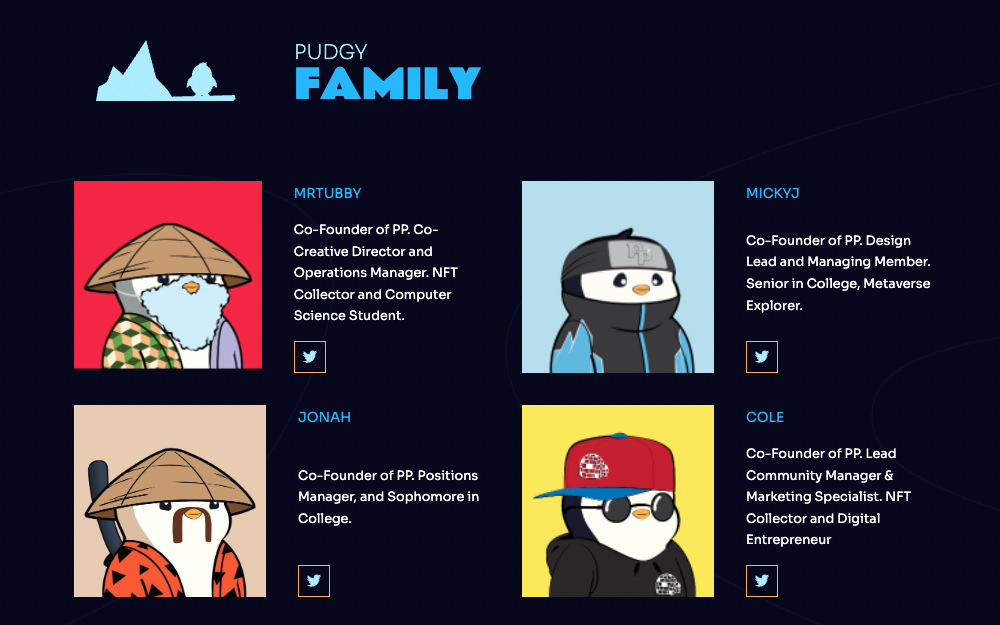
1.5 Miscellaneous: other website essentials
1.5.1 FAQ
Adding a FAQ (“Frequently Asked Questions”) section to your project’s website gives you the chance to clarify some of the most common doubts your visitors and potential investors may have, especially in this early phase for NFTs and crypto.
You may answer general questions, such as:
- What’s an NFT?
- What does “minting” mean?
- How do I get crypto to mint the NFT?
- What’s the utility?
But you should also focus on more project-specific ones, like these:
- Is XYZ involved in this project?
- What’s the supply?
- Where are the NFTs stored?
- Do you charge any fees for transactions?
1.5.2 Newsletter
Not everybody will join your Discord server or follow your announcements (I was quickly overwhelmed and almost feel the lack of a good old weekly-digest – feel old yet? – for the communities I follow), so a newsletter can come in handy.
It’s a useful tool to keep your investors in the loop and let them know of any relevant news about your project and your team. So, don’t forget to add a newsletter subscription section in a visible area of your website and encourage people to join.
2. Project Data
2.1 Collection stats
Although OpenSea offers comprehensive stats to the NFT community, including the volume, the floor price, the number of items of hundreds of collections and so on, you might as well offer relevant data for your investors right on your website. This strengthens your credibility and fosters transparency, making the project a lot more inviting to potential investors.
Cryptopunks is doing an awesome job in this regard. They provide advanced stats that offer a greater overview of the health and performance of the project, such as the current lowest price available, their sales over the last 12 months, and the value of their sales over the last 24hs, among many other cool info also for those NFT passionates with limitated wallet (as me).
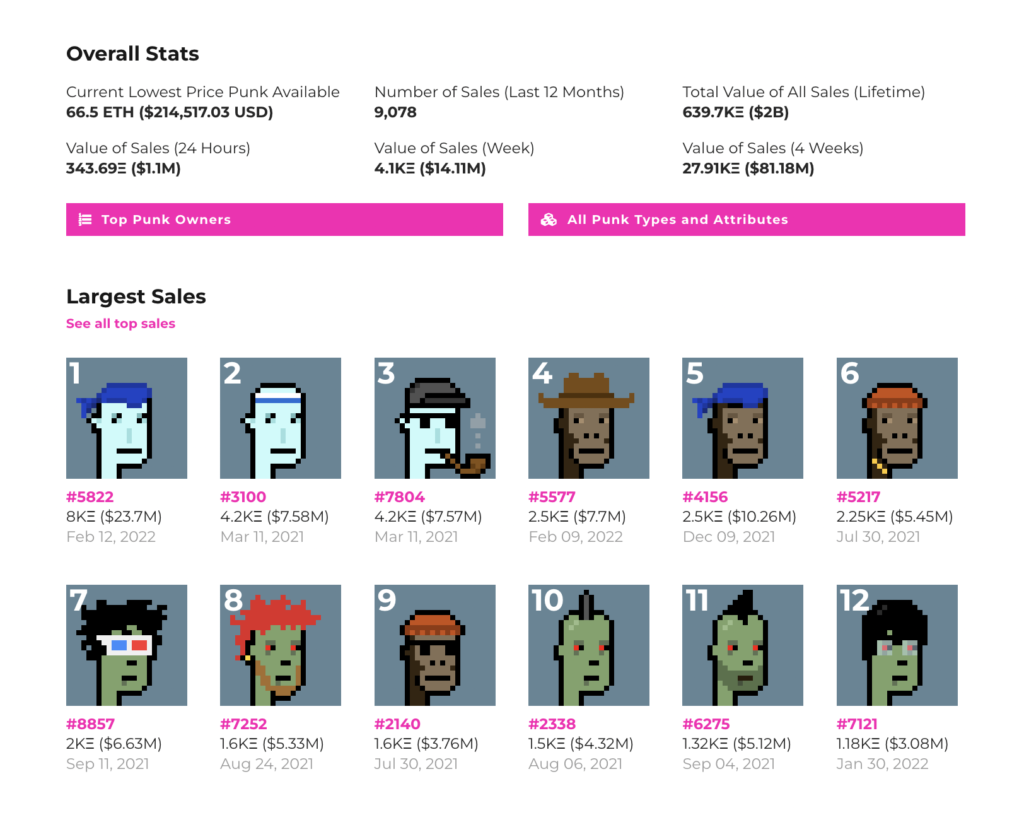
2.2 Rarity
One of the defining features of NFTs is that they are unique. While the value of your collection is mainly related to the hype around it, the value of each item depends on its traits (or attributes). However, as a owner you cannot browse through every single item on OpenSea to check how unique yours is; the same applies if you’re a potential buyer who want to know which item to mint.
If you don’t have the resources to build something similar to what CryptoPunks does in its website to let the users browse the collection, you might want to list it on an online platform that does the job for you. Rarity Sniper, for example, is a platform that helps people check the rarity of collections stored on Ethereum, Solana, and other blockchains – all in just a couple of clicks. More than 1300 collections have been listed on this platform, so its appeal is quite obvious.
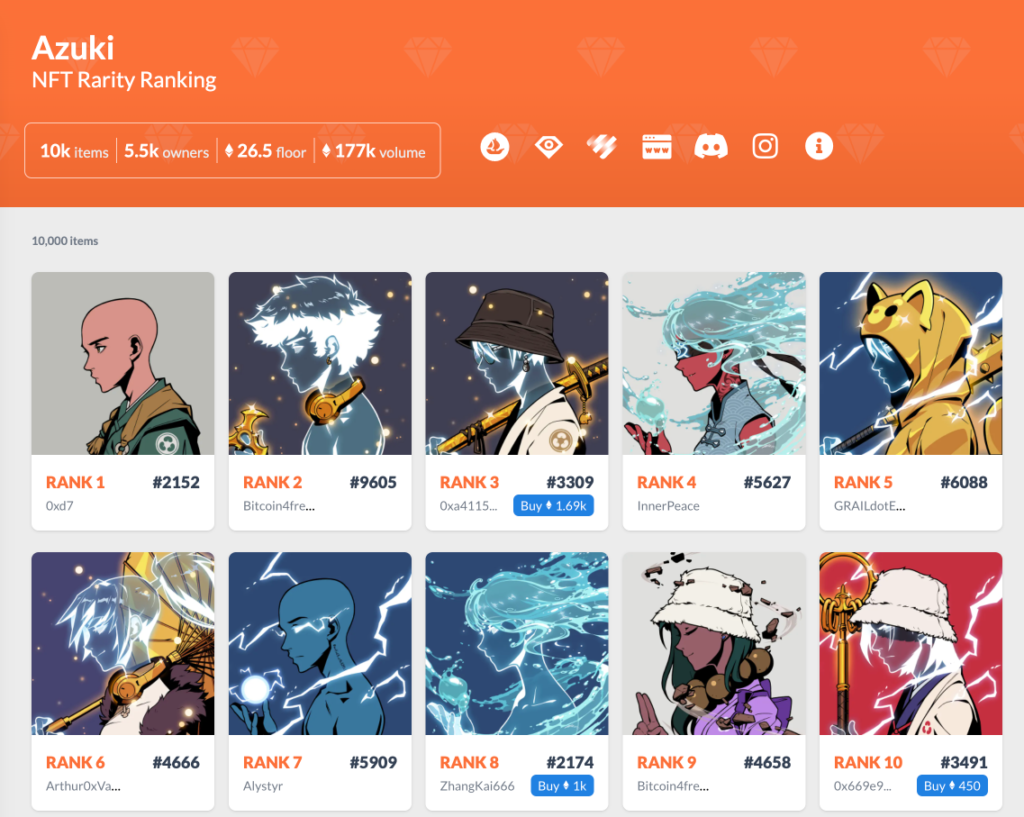
3. Community
As I said, if you think launching a website and designing a collection is all there is to a successful NFT project, you’re way off. It’s no secret that an NFT project is as successful as the community built around it, reason why most of your daily routine will revolve around managing and engaging your community. And it starts long before the actual publication of your collection.
Your community will not just come up out of nowhere, but there are many ways to form one. You can get your NFT team to take an active role in sparking conversations about the project and the ecosystem in general. Or you can develop a gamified strategy and interacting with users with loyalty programs, treasure hunts, and trivias. But regardless of the approach you choose to start building your community, there’s one thing that should always be part of your strategy: Discord.
All serious and committed NFT projects, communities, and influencers have a well-set Discord server where their community can interact, and yours shouldn’t be the exception.
For those who are a bit out of the loop, Discord is a community-oriented platform to talk over voice, video, and text, and it’s made up of mostly private, invite-only spaces called “servers.”
Let’s take a look at some of the main aspects of community building and growth on Discord.
3.1 Scams
Let’s start with the bad news. Despite all its benefits, Discord is not free from hackers and scammers looking to profit from your community. It’s a serious thing because sometimes, for instance, a scammer will impersonate a team member on the server, get them banned, gain administrator-level access, and deceive people into minting a fake NFT, which for your users means losing money. Sometimes a lot of money.
So, it’s very important to make sure your server is a safe space for your community. Putting the appropriate security measures in place will offer people a greater sense of trust and increase your project’s credibility.
On Discord, one of the fastest ways of securing your NFTs and preventing scams is by turning off Direct Messages, so you might want to encourage your server members to do so, among other methods to avoid scams.
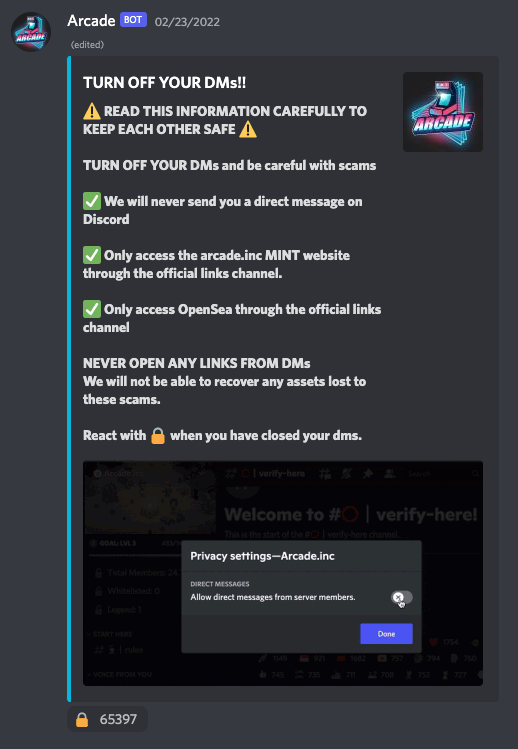
3.2 Verification gates
Still about safeguarding your server, verification gates and verification levels can help prevent unwanted bots and spam, as they refer to the minimum level of security that a user must meet to be allowed to send text messages in a given channel.
On Discord, there are five different levels of verification for users, ranging from “none” to “highest,” and each level requires the user to meet certain criteria —such as having a verified email on their Discord account or being present on the server for over 10 minutes, among others.
On the other hand, you can implement verification gates. For instance, you can ask them to react to an intro message with a specific emoji. This proves they have read the rules and introductory messages and are ready to actively participate in the community.
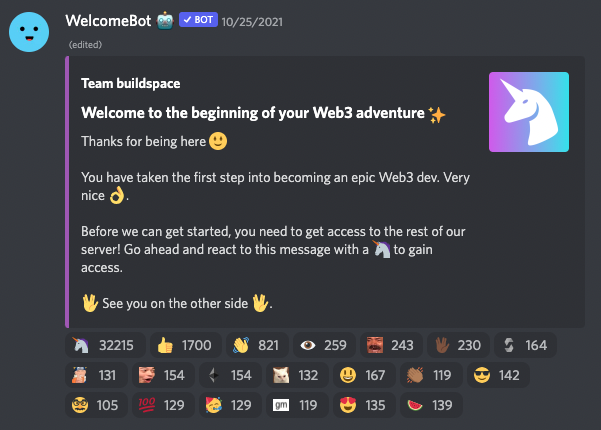
3.3 Channels
As you can see from the video overview of The Ballman Project’s Discord server, you can create channels for the community to interact, you can create technical channels for handling support tickets or checking NFT ownership, and much more. Some of these channels will be covered in the next posts, some not, however the best suggestion I can give is to join some of these servers (no, you don’t need to own an NFT, that’s just to unlock unique benefits or experiences) and try yourself.
Here are some you can start with.
3.3.1 Readme / Official links / How-to channels
These channels may seem to duplicate the information on your site, and to some extent they do. However:
- a user may join your Discord server through an invitation and without having seen your site first, so a readme channel offering him some information about the project is important (you can always refer him to the site for detailed info)
- a user may want to interact with you on social media, access the collection on Opensea or need support, so a channel with official links will make life easier for them
- the how-to channel could be read-only (becoming a copy of the faq section on your website) but it could also be an open channel in which you encourage solidarity among peers
These channels do not require a particular effort but on the opposite they can be relevant for your users, so when in doubt, why not create them?
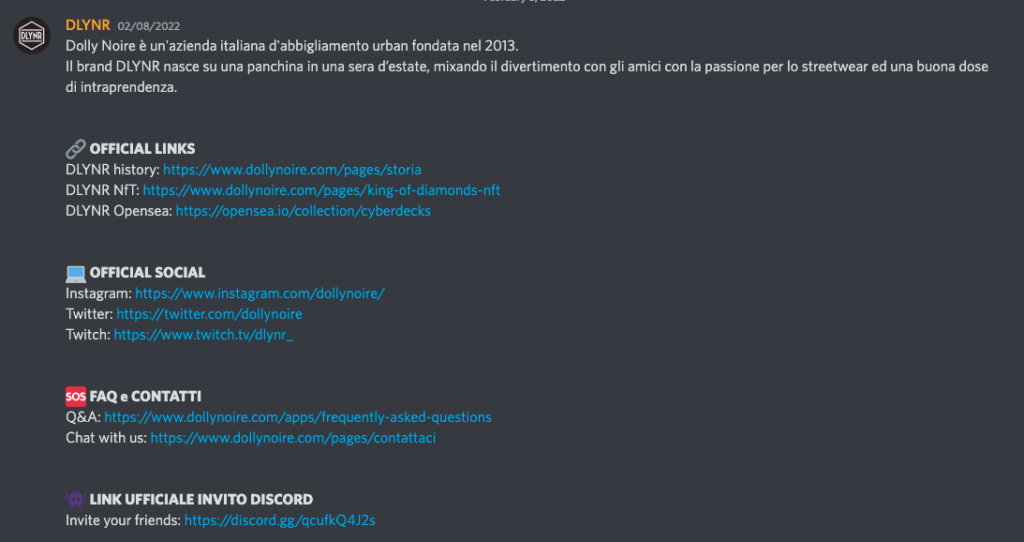
3.3.2 Language-specific channels
Not everyone speaks the same language. And while English might be the preferred language to run an NFT community, you can take things to the next level with language-specific channels to cater to other people’s needs.
Language-specific channels provide you with the chance to expand your community and welcome other perspectives to the conversation while internationalizing your project.
Choosing which language-specific channels to create will depend on many factors, including server insights, community demands, and the current state of the market.
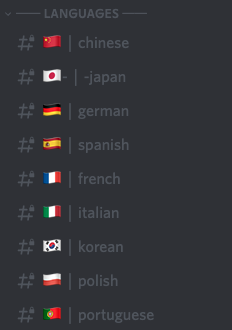
3.3.3 Interest-based channels
You can set a channel on your server for pretty much any topic you want or any topic your community shows interest in. The best approach to creating interest-based channels is basically paying attention to your community and the topics they most care about. They will be thankful if you provide them with a space to discuss that specific topic, and it will show you are listening.
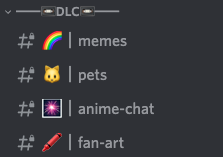
3.4 Roles
One of the cornerstones of Discord servers is the possibility of creating roles and assigning permissions.
You can create administration roles such as “moderator” and assign certain permissions to them – e.g. moderating and deleting messages, banning other members, and so on.
Or you can create roles that enable your users to do something specific. Probably the most important role you can create for your users is the “holder” role, that is, a role that will be assigned to every person who holds an item of your NFT collection. And there’s a lot of room for creativity here: you can grant holders specific permissions and perks to show them how special they are.
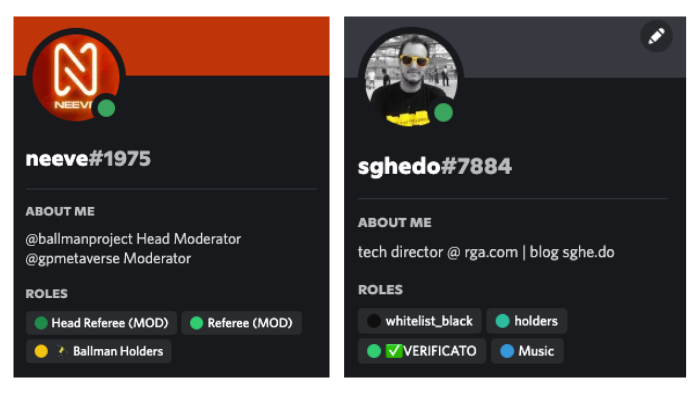
3.5 Activity-based levels
Engagement and active participation are an absolute necessity when it comes to building a powerful community.
One of the best and most comprehensive leveling bots is MEE6, which provides customizable rank cards to your most active members and assigns them roles automatically once they reach a certain level, gamifying the whole Discord experience.
While I have not yet seen specific cases where levels are used to reward the most active users, what I have seen is that in many cases in the pre-launch phases of a collection, levels are used to allow users to access whitelists (if you don’t know what a whitelist is, I discuss this below).
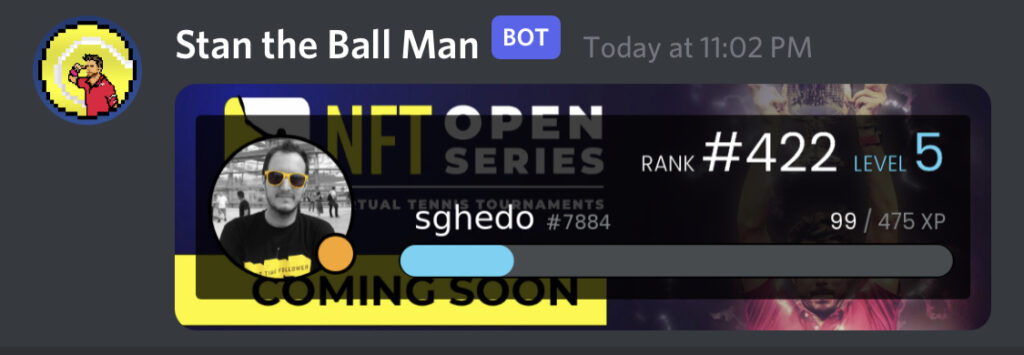
3.7 Moderators
Last but not least, moderators, coordinators and all these persons behind all of this. They have a very significant role when it comes to community building. They have the power to moderate or delete messages and invite, ban, or suspend people on the server.
But with great power comes great responsibility. Mods are in charge of making your server a safe and cool space to hang out, keeping an eye on everyone, and making sure they behave according to the rules. Their work will have a major impact on how strong your NFT community is.
In fact, Discord moderation has grown so important that the platform now has a Moderation Academy. Also, major brands have begun creating specific roles for Discord mods in their companies to boost their digital efforts. Gucci, for example, was recently looking for a Discord Community Moderator. That’s a career opportunity you don’t learn about in school, isn’t it?
The best mods are reliable and active participants on the server, as well as experts in their field. As such, they can easily earn the member’s trust and respect, which is essential for a well-moderated and highly-connected community.
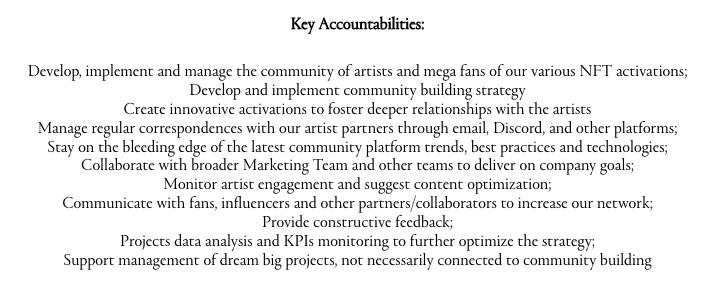
3.8 Management tools
Now, this all sounds pretty overwhelming, right? From engaging with your investors to protecting them from scams, there’s a lot of work involved in growing a community.
Don’t worry, I’ve got you covered. I will write more on certain tools that help you manage and automate these tasks in my next posts.
4. Growth hacking
Now that your website is published and your Discord server is all set up in a safe and well-structured way, it’s time to make it grow. There are a series of steps you can take to foster your community and scale your NFT project. Let’s delve deeper into some of them.
4.1 Giveaways / Airdrops
NFT giveaways and airdrops are powerful marketing tools that can help build awareness around your project and reach a greater audience.
In an NFT giveaway or airdrop, you’re basically giving tokens to certain users for free or in exchange for something other than money – such as following the project on social media or subscribing to the project’s newsletter. The idea is to create hype around the project and spark a conversation that will bring more people on board, so it’s a kind of a win-win situation.
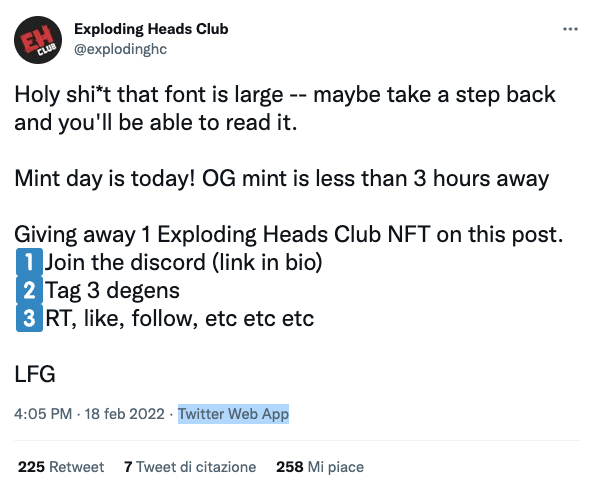
4.2 Whitelist
An NFT whitelist is essentially a list of people that are pre-approved to mint NFTs on a specific date and time. This means that whitelisted people get early access to the NFTs and guaranteed slots to mint them, as well as “early-bird” price. And some projects might even offer NFTs for free to whitelisted people.
Whitelisting is a common practice in the NFT world. It’s the perfect tactic to reward early supporters of your project and it can do wonders in terms of awareness and promotion.
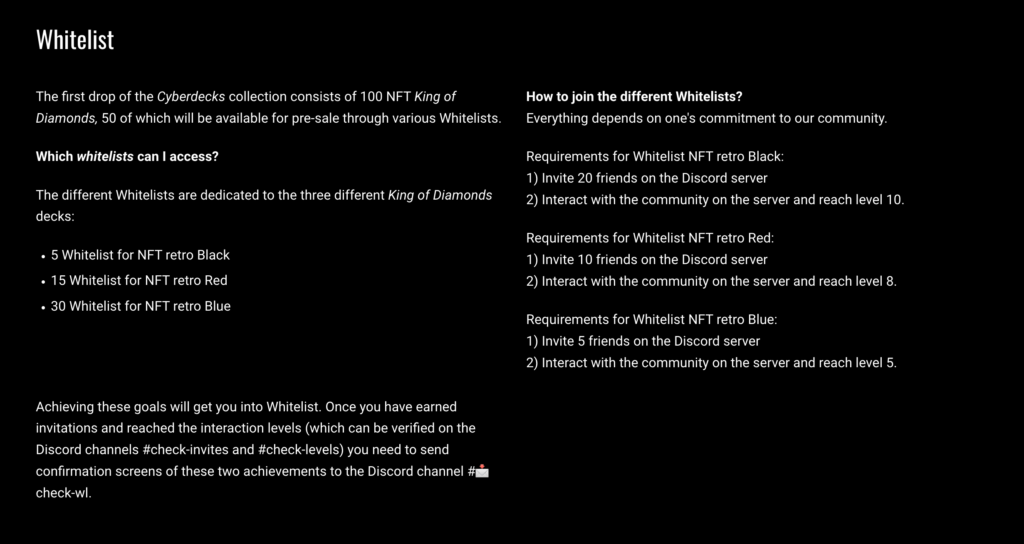
Now what?
If you feel a bit overwhelmed by all this information, I completely get it. It’s a lot to take in but the good news is that more articles are coming your way (I guess it’s a good news, isn’t it?). In my next posts, I will delve deeper into some of these topics and more, including OpenSea, tools for managing and automating the community, and so on.
So, if you want to stay in the loop and discover how to make sense of the NFT world, enter your email address below (will send monthly updates little longer than a tweet) or keep an eye on Linkedin and Twitter.

Leave a Reply